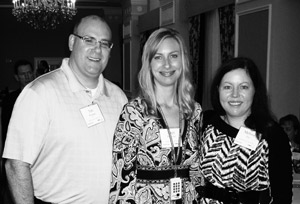Webinar in Review: 2018 Investment Update
Contributed by: Angela Palacios, CFP®, AIF®
Late January, investor sentiment shifted from investors worried about missing out on the bull market to concerns that markets were overbought. Volatility came stampeding back, bond yields continued rising and we even got a peek at some inflation creeping it’s way back into the economy. This created a flurry of investor concerns and a basis for much of our discussion in our investment webinar to start the year off.
What are we watching out for in 2018?
A number of topics could be of concern this year. A potential trade war, geopolitical concerns, inflation and bond yield spikes have the eye of our investment committee.
While U.S. markets were looking a bit expensive at the beginning of the year, international markets were telling us a different story of opportunity. Other themes we touched on included ESG and cost compression in the investment industry.
Regardless of what may come, it is important to keep a few points in mind. Plan, don’t panic. Planning is the cornerstone to everything we do for you. Remember your financial plan is built with market volatility in mind. It is expected within the plan. It is important to keep this in perspective when headlines are doing everything they can to pull your attention away. What we can control is maintaining appropriate levels of cash for your needs, managing as tax efficiently as possible so more dollars stay in your pocket and rebalancing to maintain a proper risk profile that is appropriate for you.
What actions are we taking?
With the extended positive returns we have seen in U.S. markets prior to this year, we discussed strategies we are utilizing to rebalance. A question we commonly received from you is “What prompts us to make a change in your portfolios?” We took an in depth look at how we make changes in your portfolio and what triggers us to make these changes.
If you would like to learn more about any of the topics touched on here, feel free to watch the webinar above!
Angela Palacios, CFP®, AIF® is the Director of Investments at Center for Financial Planning, Inc.® Angela specializes in Investment and Macro economic research. She is a frequent contributor The Center blog.
This information has been obtained from sources deemed to be reliable but its accuracy and completeness cannot be guaranteed. Opinions expressed are those of Angela Palacios and are not necessarily those of Raymond James. Investing involves risk, investors may incur a profit or loss regardless of the strategy or strategies employed. International investing involves special risks, including currency fluctuations, differing financial accounting standards, and possible political and economic volatility. Investing in emerging markets can be riskier than investing in well-established foreign markets. Rebalancing a non-retirement account could be a taxable event that may increase your tax liability. You should discussion specific tax matters with the appropriate professional.


















